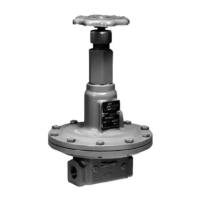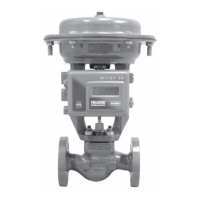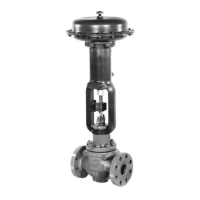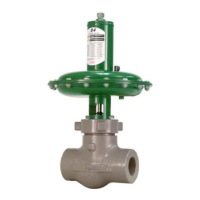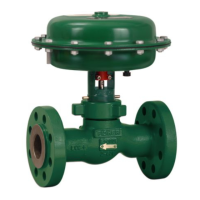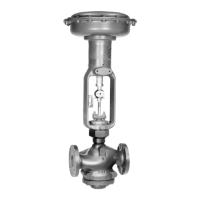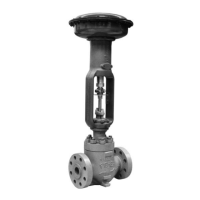Principle of Operation
Refer to the operational schematic in Figure 2.
Compression of the pilot spring pushes the diaphragm
down and holds the pilot valve plug open. Outlet
pressure is changed by varying the amount of pilot
spring compression.
When steam enters the inlet of the valve, it also enters
the pilot supply line and ows through the open pilot
valve to the top of the main diaphragm. The force
created by this steam pressure on the diaphragm
overcomes the force of the main valve spring opening
the valve plug and allowing steam to ow downstream.
Downstream pressure registers under the main
diaphragm through the control line and tends to
balance the diaphragm. Steam from the downstream
system also registers under the pilot diaphragm
through line. Pressure forces the diaphragm upward,
permitting the pilot valve plug to move toward the
closed position. Flow of steam to the top of the main
diaphragm is thereby reduced and the pressure on
main diaphragm drops due to the bleed through the
orice. The main valve moves toward the closed
position, allowing only enough steam ow to satisfy
downstream requirements.
When steam demand increases, the downstream
pressure decreases below the setting of the pilot
spring. The pilot opens to increase the pressure on the
main diaphragm. The main valve opens to increase
the ow downstream. Conversely, if the steam demand
decreases, the downstream pressure increases and
the pilot reacts to decrease the pressure on top of
the main diaphragm. The main valve throttles toward
the closed position and the steam ow decreases.
Thus, through the combination of pilot and main valve
operation, control of the downstream steam pressure
is maintained.
A check valve is included in all Type 92B pilots to limit
dierential pressure on the main valve diaphragm.
In the event of a large decrease in downstream
pressure, the check valve opens to relieve diaphragm
loading pressure to the downstream system. The
check valve cartridge assembly has a factory setting
to limit dierential pressure across the diaphragm
to approximately 40 psid / 2.8 bar d. If diaphragm
dierential pressure exceeds 40 psid / 2.8 bar d,
the check valve opens to relieve diaphragm loading
pressure into the downstream system, thereby
preventing a high dierential across the diaphragm
which might otherwise cause diaphragm damage. The
check valve closes and normal operation resumes
when the dierential pressure across the diaphragm is
reduced to the proper level.
Figure 2. Type 92B Operational Schematic
E0672_1
INLET PRESSURE
OUTLET PRESSURE
ATMOSPHERIC PRESSURE
LOADING PRESSURE
CONTROL LINE
MAIN VALVE
DIAPHRAGM
VALVE PLUG
MAIN VALVE SPRING
PILOT SUPPLY LINE
PILOT VALVE
PLUG
PILOT
DIAPHRAGM
PILOT SPRING
PILOT CONTROL LINE
ORIFICE
3
Type 92B
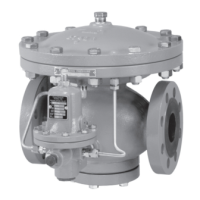
